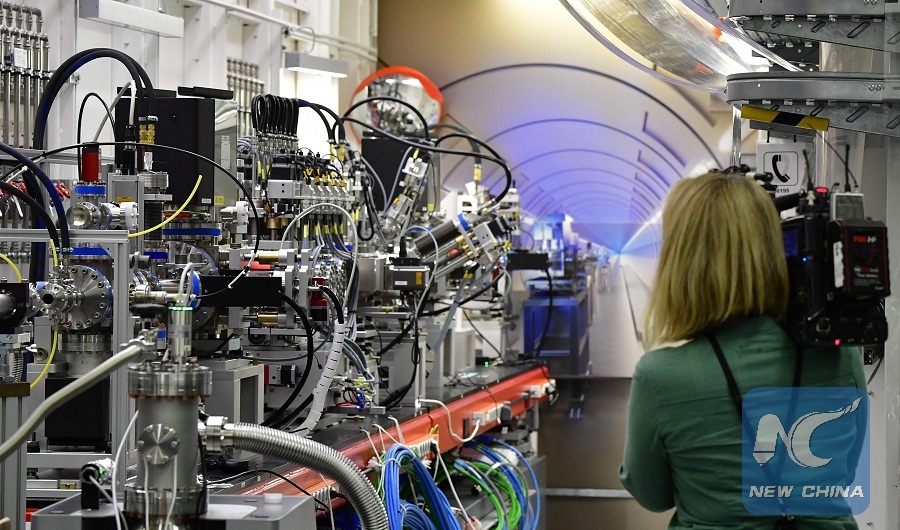
A journalist films inside a so called experimenting hut (Experimentier-Huette) prior to the official inauguration ceremony of the XFEL international research facility in Schenefeld near Hamburg on Sept. 1, 2017. (AFP PHOTO/TOBIAS SCHWARZ)
BERLIN, Sept. 1 (Xinhua) -- The world's largest and most powerful X-ray laser, European XFEL (X-Ray free-electron laser), was officially inaugurated on Friday in northern German city of Hamburg.
The 3.4km-long European XFEL generates extremely intense X-ray flashes to be used by researchers from all over the world, promising breakthroughs in medicine, biology, chemistry, energy and information technology, according to its official website.
The flashes are produced in underground tunnels, and will allow scientists to map atomic details of viruses, film chemical reactions, and study the processes in the interior of planets.
The European XFEL produces extremely bright and ultra-short light pulses. The facility will generate up to 27,000 pulses per second which is 200 times more than other X-ray lasers.
With the help of specialised instruments, these X-rays enable completely new insights into the atomic details and extremely fast processes of the nano world.
Scientists will use these X-ray flashes to, for example, map the three-dimensional structure of biomolecules and other biological particles, and do so faster and with greater details than has ever been possible, the website said.
Furthermore, single snapshots of particles produced with the X-ray laser can be drawn together to create "molecular movies" to study the progress of biochemical and chemical reactions.
Other applications include material science with the development of new materials and substances, and optimisation of storage media for computers, among other fields.
Researchers from around the world can apply for access to experiments at the facility, and the first user experiments at the facility will begin in mid-September.

